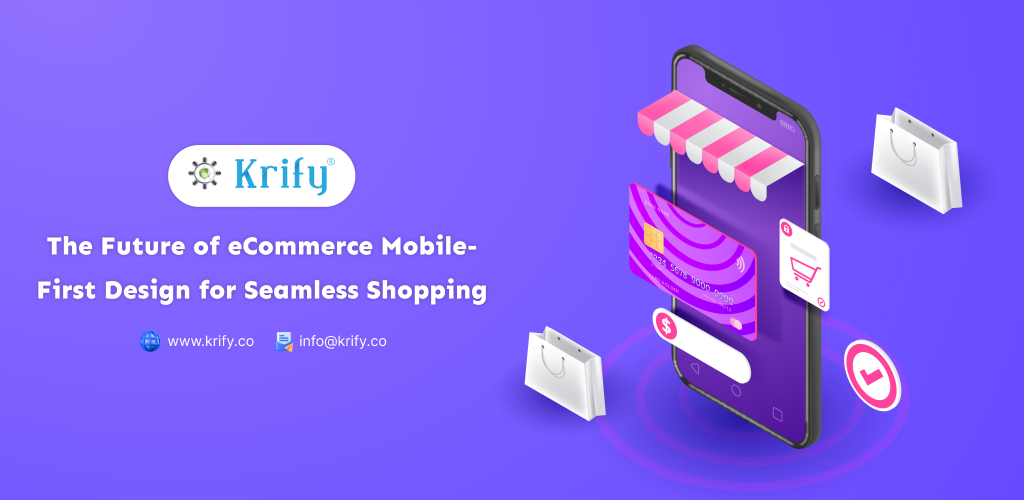In today’s rapidly evolving digital landscape, eCommerce has become a dominant force, reshaping how consumers shop and how businesses engage with their audiences. Mobile-first design has emerged as a fundamental strategy to enhance the shopping experience, acknowledging the shift in consumer behavior toward mobile devices. As technology progresses, understanding the role of mobile-first design is crucial for ensuring seamless and intuitive eCommerce experiences.
Why Mobile-First Design Matters
To begin with, the statistics are compelling: a majority of online shoppers now use their smartphones for browsing, comparing products, and making purchases. Designing with a mobile-first mindset ensures that users enjoy a smooth experience, prioritizing touch-friendly interfaces, fast-loading pages, and intuitive navigation. When businesses design with desktops in mind and adapt for mobile as an afterthought, they risk delivering clunky and ineffective user experiences.
By adopting a mobile-first approach, eCommerce platforms can provide faster, more engaging, and more personalized interactions. This approach not only simplifies the shopping journey but also boosts conversion rates. For instance, minimalist design elements that favor clarity over complexity lead to shorter load times and a higher probability of users completing their purchases.
The Features Driving Mobile-First eCommerce
Moreover, the success of mobile-first design hinges on key features that enhance usability and customer satisfaction:
1. Responsive Design
Transitioning seamlessly between devices allows users to start their journey on a smartphone and continue on a tablet or desktop without disruption. This flexibility helps increase user retention.
2. Voice Search and AI Integration
Shoppers are now looking for more ways to interact with eCommerce platforms. Integrating voice search and AI-based recommendations enables personalized shopping experiences and streamlines the purchase process.
3. Mobile Payment Solutions
Convenience in payment is essential. With mobile wallets and one-click payment options, consumers can complete transactions quickly and securely, improving the overall experience.
4. Augmented Reality (AR)
AR enhances the way users view products on their mobile devices by allowing them to visualize how items will fit into their lives, such as seeing a piece of furniture in their living room or trying on a new outfit virtually.
Challenges and Solutions
Despite these advancements, challenges remain. Mobile-first design must consider device diversity, screen sizes, and performance limitations. To combat these challenges, developers are embracing progressive web apps (PWAs) and optimizing content for mobile data usage. Additionally, testing across multiple devices and connection speeds ensures a universally positive experience.
The Benefits of Mobile-First Design
Furthermore, prioritizing mobile-first design benefits both consumers and businesses. Users can enjoy smoother, quicker, and more personalized shopping experiences, leading to higher satisfaction and loyalty. For businesses, this means improved conversion rates, greater customer retention, and a competitive edge in a crowded market. Companies that fail to invest in a mobile-first strategy risk falling behind as the landscape continues to evolve.
Embracing the Future
Moving forward, mobile-first design is not just a trend—it is an essential part of the future of eCommerce. Staying ahead in this competitive field means adapting and innovating constantly. Technologies such as 5G and machine learning will further empower eCommerce platforms to provide even more responsive and personalized services. These advancements will make it easier than ever for consumers to shop from anywhere and at any time, leading to a future where mobile-first is simply the default approach.
Conclusion
Ultimately, a mobile-first design strategy is indispensable for ensuring seamless shopping experiences. By implementing this approach, businesses can cater to the changing demands of consumers who expect speed, simplicity, and interactivity. With expertise in developing cutting-edge eCommerce solutions, Krify is ready to help businesses transform their online presence with mobile-first strategies that prioritize user satisfaction and drive long-term success.
Similar Blogs
Tips for Successful E-commerce Mobile App Development



